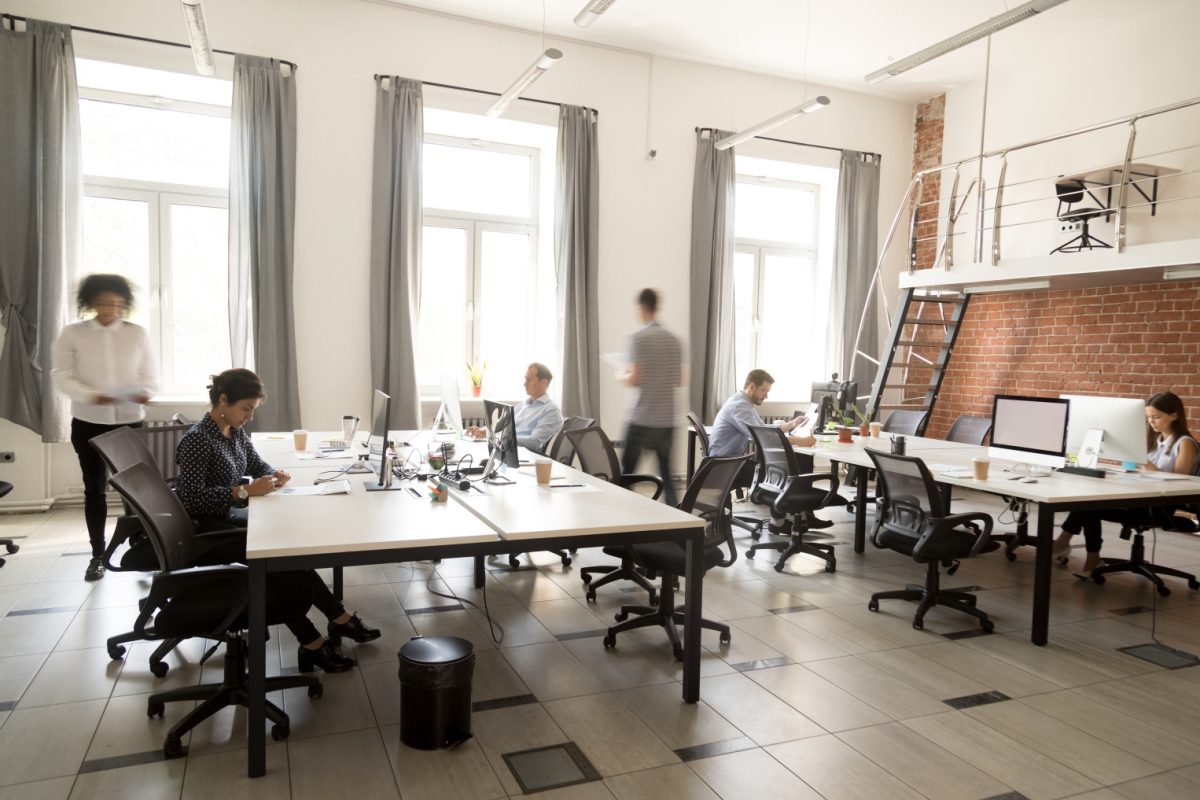Darren Moore, Head of Production of BonaCaeli’s air purification units, looks at how employers can help protect staff.
We’ve lived with the Covid-19 virus for over two years now, and, despite the success of the vaccine roll out, little seems to have changed. Just when we think it’s safe to go back into the workplace, along comes a new variant, and with it, a new set of social distancing guidelines – including the instruction to work from home if possible. Employers across the UK have coped extraordinarily well so far, but the continued uncertainty is making it difficult to plan ahead.
Some businesses, for example, may want to downsize or re-purpose workspaces to make better use of company resources – but can’t do so until they know what people’s post-pandemic working patterns will be. Other businesses may be planning to ask employees to return to the office – but need to overcome fears over the risk of new variants. And all businesses are hoping that employees will soon be able to settle into regular working patterns and routines and improve productivity.
So, what practical steps can businesses take to get off the Covid rollercoaster and help employees to return to work safely? The answer lies in tackling the problem at source.
Know your enemy
The Covid-19 virus and all its variants are primarily transmitted through air-borne mists of exhaled particles, which can remain in the air for up to three hours. It’s no surprise, then, that offices, where employees spend long periods together indoors, are hot spots for spreading the virus. The first step towards making your workplace as safe as possible for employees is to assess the risk. According to government guidelines, your Covid risk assessment should:
- Identify the activities and situations that might cause transmission of Covid-19.
- Identify those at risk (such as workers, visitors, contractors, delivery drivers).
- Assess the risk of exposure for each of those individuals.
- Identify the controls needed to reduce the risk.
You could carry out a risk assessment yourself – and there are government guidelines and templates to help you do so. However, a third-party risk assessor with expertise in air quality and an in-depth understanding of viral infection transmission mechanisms will give you a more comprehensive view and can offer science-based control measures.
Once you have a clear picture of the threat landscape you should, of course, put the recommended controls in place. These are likely to include things like improving staff circulation patterns, lowering overall occupancy levels, if necessary, limiting access to hotspot areas, recommending regular lateral flow tests and more. You can also reduce the chances of infection by increasing the air exchange rate and thereby lowering the presence of airborne Covid virus in the air. All these measures will certainly help reduce the threat of Covid and variants in the workplace – but there is another approach that, though less talked about, could be a game changer.
Cleaner, safer air
Improving ventilation is one sure way to mitigate the risk of Covid. But what we ideally need to do is not just improve ventilation but actively remove the virus-carrying particles from the air. And the good news is, this is entirely possible with existing technology.
Purpose built air purifiers can directly remove infected particles from an office by drawing in air and cleaning it using a range of technologies, including high powered ultraviolet light, filtration systems and more. Better still, air purifiers don’t care what the latest variant is – they will be equally effective against all of them, including the new Omicron variant, the common cold, flu, and others. By installing these devices, you can pro-actively and substantially limit the spread of Covid in the office and help to break the cycle of infection, regardless of what and when new variants appear.
Take positive action
By taking positive steps, including a full risk assessment, putting in recommended control measures and installing air purifiers you can help slow the spread of Covid and reduce the risk of further social distancing restrictions and disruption to work. This will, in turn, make it easier for you to plan ahead, and make the best use of facilities. The presence of air purifiers will also help to reassure staff that it is safe to return to the office – especially if employers provide clear information around their benefits.
While helping to break the cycle of Covid infection, air purifiers also increase general well-being of employees. They have been shown to help with several conditions, including asthma and diabetes – and of course reduce the transmission of colds and flu. And as well as being a benefit to staff, improved well-being can boost productivity and profits. According to the 2017 Britain’s Healthiest Workplace survey, sickness-related absences and presenteeism (where staff are present but too ill to be productive) cost the UK economy £77.5 billion a year. Coughs, colds, and flu accounted for around a quarter of illnesses – so poor air quality is costing UK businesses around £19 billion a year.
As we head into 2022, let’s do everything we can to make our offices and workspaces as safe as possible for employees. In doing so, we’ll restore people’s confidence in returning to work, improve wellbeing and productivity, and give ourselves the best possible chance of being able to plan ahead once more.

